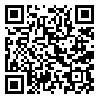BibTeX | RIS | EndNote | Medlars | ProCite | Reference Manager | RefWorks
Send citation to:
URL: http://mjiri.iums.ac.ir/article-1-52-en.html

 , Ali Manafi
, Ali Manafi 
 , Nosratollah Bouduhi
, Nosratollah Bouduhi 
 , Hamid Karimi
, Hamid Karimi 
 , Mahshid Hormazdi
, Mahshid Hormazdi 
 , Siamac Esfandi
, Siamac Esfandi 
 , Somaye Abdollahi Sabet
, Somaye Abdollahi Sabet 
 , Ali Kabir
, Ali Kabir 

Abstract
Background: Wound infection is a frequent and severe complication in burn patients
accounting for a high number of mortalities. There are some reports comparing
swab and biopsy cultures of wounds of various etiologies or chronic wounds.
Objectives: The aim of the study was to evaluate burn wound infection by different
bacteriologic methods of surface swab and tissue biopsy culture and see if
they can predict the outcome.
Methods: Aprospective study was conducted in Shahid Motahari Burn Center,
Tehran , on patients suffering from burns with more than 20% of TBSAadmitted in
2001-2002. Wound swab and biopsy specimens were collected within the second
week. Patients were followed to the point of their discharge or death.
Results: Bacterial growth was reported in 100% of swabs, in 89.3% of the biopsies
in differential culture media, and in 18.7% of the biopsies in selective culture
media. These different cultures had similar pathogen reports. Of the 75 studied patients,
78.7% died. The frequency rates of positive tissue cultures and bacterial load
were not different between the dead and those who survived.
Conclusion: Bacteriologic methods do not have enough predictive value to assess
clinical outcome.
| Rights and permissions | |
 |
This work is licensed under a Creative Commons Attribution-NonCommercial 4.0 International License. |



